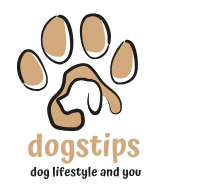Did you know the Australian Shepherd isn’t actually from Australia? Despite the name, this energetic breed developed entirely in the United States as a versatile ranch helper. Today, their striking black-and-white coats and sharp intelligence make them beloved family pets.
This guide is your roadmap to understanding these remarkable dogs. Whether you’re a first-time owner or a seasoned enthusiast, you’ll discover practical insights about their history, grooming needs, and training strategies. We’ll also debunk myths—like unfounded aggression claims—and highlight what makes their compact bodies and signature markings so unique.
You’ll learn why their working heritage matters. Originally bred for herding, they thrive with activity and mental challenges. Their short, bobbed tails and merle patterns aren’t just eye-catching—they’re part of a legacy shaped by American ranchers.
From nutrition tips to lifespan details, every fact here comes from trusted sources. For those exploring similar breeds, our complete guide to Aussie Doodle care offers additional health insights. Ready to dive deeper? Let’s begin.
Introduction to Black and White Australian Shepherd Dogs
Originating from European herding dogs, these agile workers became icons of American ranching. Their ancestors arrived with Basque shepherds in the 1800s, blending Spanish cattle dog instincts with frontier demands. Though often linked to Australia, their name reflects early associations with imported sheep—not the breed’s birthplace.
Roots in Ranchland Resilience
Ranchers prized these dogs for unmatched focus and stamina. Compact builds allowed quick direction changes, while weather-resistant coats handled harsh conditions. Their signature bobbed tails resulted from natural mutations, not docking—a trait still seen today.
Instincts That Shape Behavior
Genetic diversity creates striking features like mismatched eyes or merle patterns. Early socialization prevents overprotectiveness, channeling their energy into family-friendly play. Daily challenges—puzzle toys or obstacle courses—keep minds sharp, honoring generations of problem-solving work.
Understanding this lineage helps owners appreciate their need for purpose. Without structured activities, their intelligence can turn to mischief. Proactive training transforms natural herding drives into impressive tricks or competitive agility skills.
Appearance and Breed Standard for the Black and White Australian Shepherd
Visual traits define this breed’s identity while serving practical purposes. Every feature reflects generations of selective breeding for work efficiency and durability.
Coat Colors, Markings, and Tail Characteristics
Predominantly dark coats with crisp white accents meet strict guidelines. Limited pale patches typically appear on paws, chests, and facial blazes. These contrasts helped ranchers spot dogs in dense brush.
Naturally short tails enhance agility during quick turns. This trait reduces injury risks in rugged terrain. Dense double-layered fur repels moisture, supporting all-weather resilience.
Distinctive Eye Colors and Genetic Traits
Striking mismatched irises—one blue, one brown—stem from merle gene expressions. Such variations don’t affect vision but add to their signature look. Responsible breeders test for health-linked color patterns.
Compact, muscular builds align with official measurements: 18-23 inches tall and 40-65 pounds. These proportions enable explosive speed and endurance. When selecting a puppy, prioritize structure over rare colors to support long-term mobility.
Health, Grooming, and Nutrition for Black and White Australian Shepherd
Proper care ensures these intelligent dogs thrive. Their unique needs stem from high energy levels and genetic heritage. Let’s break down practical strategies to keep them healthy and vibrant.
Grooming Essentials and Coat Maintenance
Brush their dense fur twice weekly to prevent mats. Use an undercoat rake during shedding seasons—spring and fall. Bathing every 6-8 weeks preserves natural oils. Trim nails monthly and check ears for debris to avoid infections.
Nutritional Needs for Active Dogs
Feed premium kibble with 25% protein content to fuel their active lifestyle. Measure portions to prevent obesity—consult your vet for calorie guidelines. Dental chews reduce plaque, while fresh water supports metabolism. Avoid fillers like corn or soy.
Managing Health Concerns and Genetic Testing
Schedule annual hip exams to catch dysplasia early. The MDR1 gene test identifies medication sensitivities. Regular exercise combats osteoarthritis risk. For mixed breeds like the Mini Aussiedoodle, tailor care to their specific needs.
Combine vet checkups with home care: monitor weight, track activity, and note behavior changes. A balanced routine adds years to their 12-15 year lifespan. Start today—your effort shapes their tomorrow.
Training and Exercise for High-Energy Australian Shepherds
Channeling their boundless energy requires smart strategies. These clever companions flourish when their minds and bodies stay engaged through purposeful activities.
Structure Builds Confidence
Start with 15-minute training sessions twice daily. Use clicker methods to mark desired behaviors instantly. Focus on commands like “leave it” or “wait” to manage their herding instincts. Reward-based repetition works best—treats or playtime keep them motivated.
Agility drills improve coordination. Set up DIY hurdles using household items. Practice weaving through cones or balancing on low beams. Gradually increase difficulty as skills develop.
Teamwork Strengthens Bonds
Assign family members specific roles. Kids can handle treat rewards during “sit-stay” drills. Schedule group walks where everyone takes turns holding the leash. This builds trust and reinforces obedience.
Organize playdates with calm dogs to encourage polite interactions. Visit parks early to avoid crowds. Praise calm behavior around children using phrases like “gentle paws.” Consistent socialization prevents territorial habits.
Remember: tired dogs are happy dogs. Combine mental challenges like puzzle feeders with 60 minutes of brisk walking daily. Rotate toys to sustain interest and curb destructive chewing.
Exploring the Breed’s History and Working Heritage
Ranch hands once relied on these agile herders to manage livestock across vast territories. Over generations, their role expanded from dusty cattle drives to polished competition rings. This shift preserved their natural talents while adapting to modern canine sports.
Evolution From Cattle Herding to Modern Competitions
Early ranchers valued the breed’s ability to read livestock movements and make split-second decisions. These instincts now shine in agility courses and flyball tournaments. Competitors navigate obstacle courses with precision, mirroring the quick pivots needed during herding.
Herding trials remain popular, testing dogs’ ability to control sheep through gates and pens. Many owners use these events to honor their pet’s lineage while burning energy. Such activities prevent boredom and strengthen the human-canine bond.
The Role of Clubs and Competitive Programs
Organizations like the Australian Shepherd Club of America safeguard breed standards through education and events. They offer titles in conformation, obedience, and stockdog trials. These programs ensure working abilities stay central to the breed’s identity.
Local clubs host workshops teaching owners to channel natural herding drives into structured games. Competitions provide measurable goals, keeping dogs mentally sharp. Participation often reveals hidden talents, from scent work to search-and-rescue simulations.
Understanding this rich background helps owners design effective training routines. Matching activities to genetic strengths creates happier, more fulfilled companions. It’s not just exercise—it’s a celebration of heritage.
Final Reflections on Embracing the Black and White Aussie Lifestyle
Embracing life with these striking herding companions means committing to an active, purpose-driven partnership. Their working lineage demands daily mental challenges paired with physical exercise—think agility drills or family hikes. Regular grooming sessions and health screenings preserve their iconic merle coats and bright eyes for years.
Successful ownership hinges on structure. Consistent training programs channel natural herding instincts into impressive tricks or competitive sports. Involving children in playtime strengthens bonds while teaching responsibility. Local clubs offer workshops to refine skills, from obedience trials to genetic testing guidance.
Remember: thriving dogs need balance. Combine puzzle toys with routine vet checks to honor their ranchland resilience. Whether competing or cuddling, their adaptability shines when loved ones prioritize engagement. Ready to dive deeper? Connect with regional breed enthusiasts—your journey with this spirited companion has only just begun.
FAQ
Do black and white Aussies require special grooming for their coats?
Their double-layer coat benefits from weekly brushing to manage shedding. Focus on the thicker neck and hindquarters during seasonal changes. Use undercoat rakes for dense fur and trim paw pads for cleanliness.
Are mismatched eyes linked to health risks in this breed?
Heterochromia (different-colored eyes) often results from the merle gene but doesn’t inherently cause vision issues. However, always request veterinary ophthalmologist exams through organizations like OFA to rule out hereditary conditions.
How do their herding instincts affect family life?
Early socialization prevents nipping behaviors toward children or pets. Structured play sessions with toys like flirt poles channel their drive constructively. Consistent training builds reliable off-switch habits indoors.










Leave a Comment